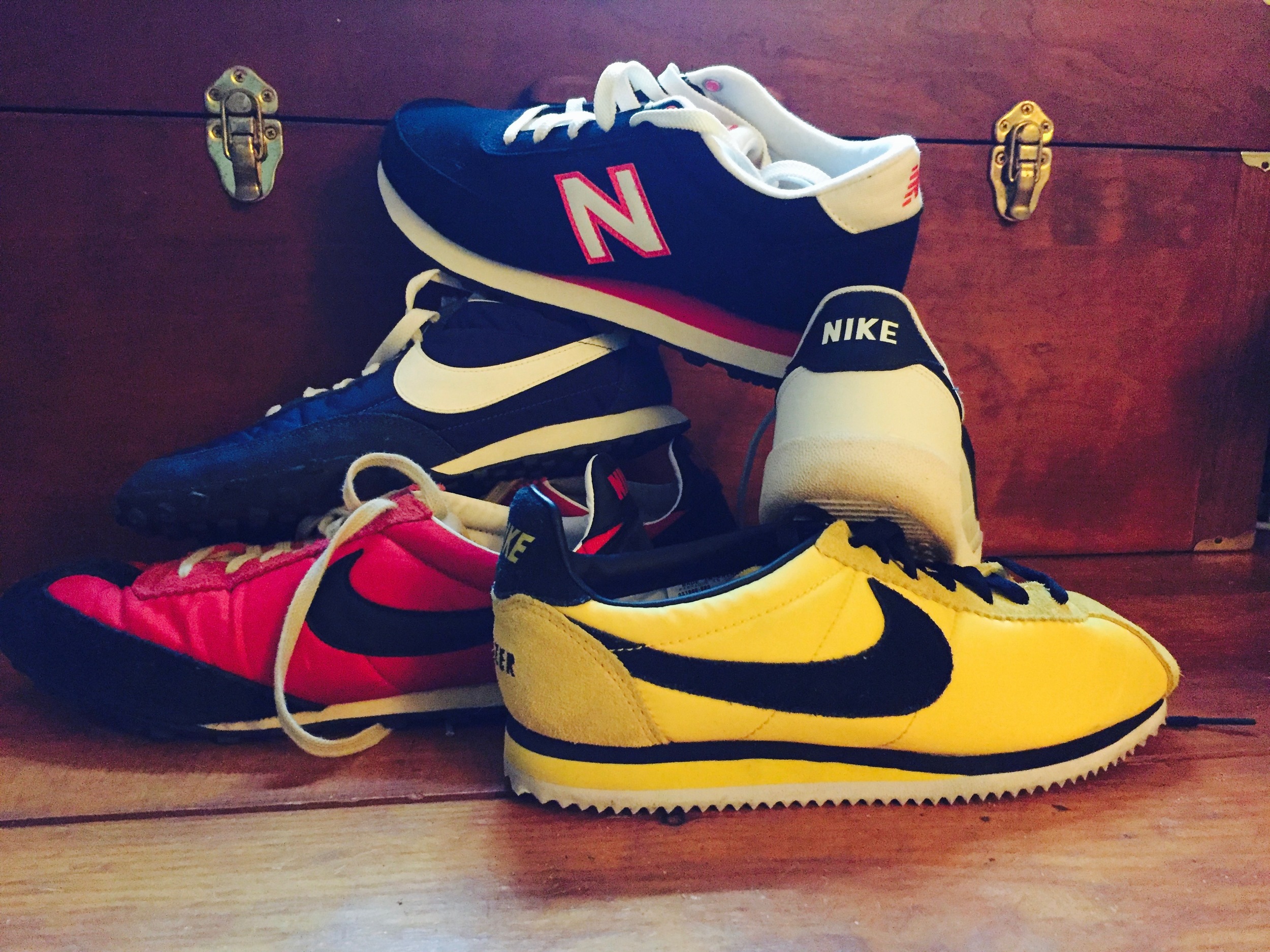Back pain? Knee pain? Take a look at your shoes
Did you look at your feet right there when I said what's on your feet? Did you?
Made you look :)
But seriously, what are you wearing on your feet right now? Are they sneakers? Are they tennis shoes?* Flip flops? High heels?
These are all sneakers right? Yes and no. Not one of them is actually designed for performance. These are all retro throwback shoes that were once used as running and tennis shoes, but don't have the modern day technology that actual performance shoes have. And yes, I have a shoe problem. No, this isn't even close to all of them...
If you are wearing sneakers, do you know what kind?
If they are running shoes, do you know if they are stability shoes or minimalist shoes?
In today's saturated sneaker market it can be especially daunting to find the right type of shoe for your workouts. You might pull something off of the shelf because you like the color or the way they make your calves look in the mini-shoe mirror. But are they the best shoes for what your doing?
The right shoes matter for so many reasons. Do you have chronic back pain? Check your shoes. Knee pain? Check your shoes. Hip pain? Yes check your shoes.
Also, just make sure they're tied. K?
Avoid sportswear and lifestyle shoes for training
So I have sort of a shoe problem, as you can tell from the photo above. More like...well...let's just say I would welcome a walk-in closet. :) I have a particular fondness, along with vinyl records, for vintage sneakers.
These vintage styles have made a big comeback in recent years, much to my delight, but even though they look like workout shoes, they're not meant for training. In fact, companies like New Balance, Puma, and Nike refer to these as lifestyle shoes.
Double-check your workout shoes and make sure they are designed for performance.
Running Shoes vs. Training shoes
Most clients I see walk in to the gym are wearing running shoes which isn't necessarily a bad thing. Most running shoes offer some lateral support and, depending on the style, cushioning.
The biggest difference between runners and trainers is the tread. Running shoes typically have a more aggressive tread, while trainers have a flatter sole, more suitable to indoor surface.
Are you primarily a runner who adds in two days of strength training? Choose a running shoe. Have you signed up for the local bootcamp, Zumba or crossfit class? Choose a trainer. The general rule is that trainers are safe for 3-5 miles of running, and runners are safe to do 1-2 days of training.
It's tougher to see in this picture, but the shoe on the left is a running shoe, while the shoe on the right is a trainer. The tread on the left is much more aggressive and still fine for wearing in the gym, while the tread on the right is designed specifically for smooth surfaces.
How can you tell the difference?
If you're at at a box shoe store such as a DSW Warehouse it's nearly impossible. The sneaker collection is lumped together in one aisle and this is where it becomes more difficult to tell a running shoe from a fashion shoe.
But if you visit your local sporting goods or running store, you'll find different sections for training and running and lifestyle.
Are you a pronator, supinator, terminator or neutral?
If you're the Terminator well...I don't think shoes are a big concern for you.
Do your ankles cave in? Do you have a low arch or flat arch? You're a pronator.
Do you walk more on the outside of your feet? Then you're a supinator. And if you don't do either, chances are you're neutral.
That's a crude explanation of foot types, but if you go to a running store to find a good pair of shoes these are what the sales folks are looking at when they look at your feet.
Minimalist shoes
A few years ago, the book "Born to Run" by Chris McDougall revolutionized the running world, and the shoe world in general. By the time the book was written, Nike was already experimenting with the Nike Free and Vibram had produced those weird alien looking five fingered shoes that you'll still see at races and in gyms.
McDougall began the book because he was looking for an answer to foot pain. The book is an excellent read, but the conclusion for McDougall is that he was simply wearing too much of a shoe and it was dramatically affecting his gait.
I mention this here because minimalist shoes, such as the Nike Free, the New Balance Minimus, Altra Zero Drops, and others are great shoes that have been mixed into the market, but:
1. They are not for everyone
2. You should be aware of what you're buying when you buy them. Again, these shoes will be mixed in with the great deals at DSW Warehouse and TJ Maxx, but if you head off to a bootcamp class with a pair of minimalist shoes with no lateral support, you might be setting yourself up for injury.
This is just the tip of the iceberg when it comes to running and training shoes. But the bottom line is, pay attention to what's on your feet.
And if you see me, pay attention to what's on my feet too, 'cause I kind of obsess over my shoes. :)
* For some reason, growing up in Western Pennsylvania, we always had tennis shoes even though none of us played tennis. I digress.


